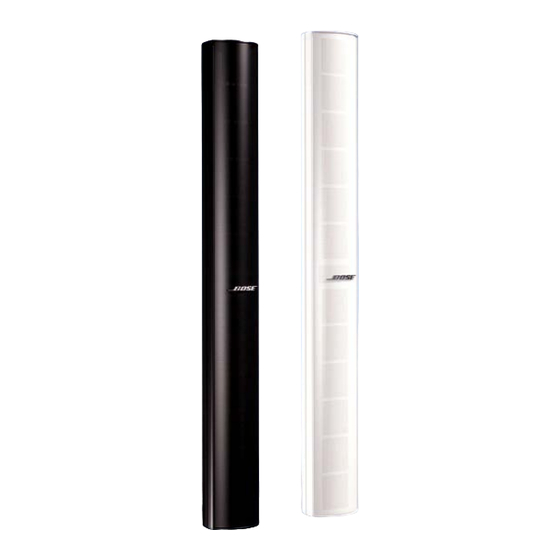Bose Panaray MA12 Технические основы и обсуждение - Страница 11
Просмотреть онлайн или скачать pdf Технические основы и обсуждение для Акустическая система Bose Panaray MA12. Bose Panaray MA12 36 страниц. Modular line array loudspeaker
Также для Bose Panaray MA12: Руководство пользователя (2 страниц), Руководство по установке (16 страниц), Руководство по установке (8 страниц), Руководство по установке (7 страниц), Руководство по эксплуатации (11 страниц)

Figure 4. The interference zone caused by the overlap of two speakers
is shown. Inter-speaker interference can result in major sound dropouts
– as severe as 20-30 dB – which harms tonal balance, clarity, and
intelligibility.
For these reasons and others, hang-and-tilt systems require a significant investment in
design time to achieve good coverage without excessive interference. To aid in this effort, the
designs are usually created using computer modeling programs, where creating the room
model, then selecting, positioning, and aiming speakers, and optimizing the design can take
anywhere from a day to weeks, or even months in the case of large projects.
Once designed, sophisticated rigging is often needed to ensure that the speakers are
properly and attractively installed. A professional engineer is often employed to implement
the exact aiming angles dictated by the design and to ensure mechanical integrity and safety.
Then the rigging hardware has to be purchased or fabricated and shipped to the site. The
installation requires a lift or scaffolding to hang the speakers in the right place. And finally
the installation often has to be reviewed by the local engineer to ensure that it meets code and
safety requirements. Rigging and installation costs can climb into the thousands of dollars.
Once the system is installed, another significant investment in engineering time is required
for system tuning and adjustment. Level matching the low to the mid and high frequencies
and setting time delays in a cluster takes time and requires a skilled field engineer. So does
setting time delays and matching levels from cluster to cluster and deciding on the overall
room equalization.
Thus designing, installing, and tuning a hang-and tilt design is time consuming and requires
a high level of skill in a variety of areas. These factors mean that hang-and-tilt systems are
often expensive to create.
Hang-and-tilt systems also suffer from compromised performance in the area of sound
localization. The visual activity is usually to the front of the listener, but the sound comes
from above where the speakers are located. This lack of eye-ear correspondence is
®
Bose
MA12™ Modular Array: Technical Foundation & Discussion
April 2002, © Bose Corporation, All Rights Reserved
Page 11 of 36
